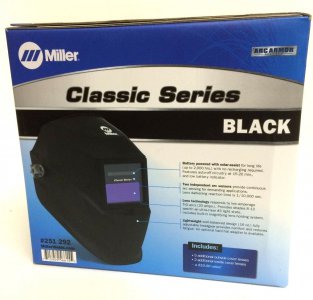- Joined
- Jun 17, 2012
- Messages
- 2,220
It looks to me like the direction of the grind scratches on the one you sharpened are going around the perimeter of the tungsten. The grind scratches should be parallel to the rod. Seems like a small thing but it makes all the difference in the world.Well I tried to lay some beads today and was doing so so and I changed the tungsten and it didn't go well after that. The flame looks like it came out of a propane torch. I changed from one that was in the torch to the new ones I bought.
You can see how I sharpened the one on the right and the one he gave me. The one he gave me has no marking on it, so I don't kno what type it is.
So what did I do wrong?
Marcel

